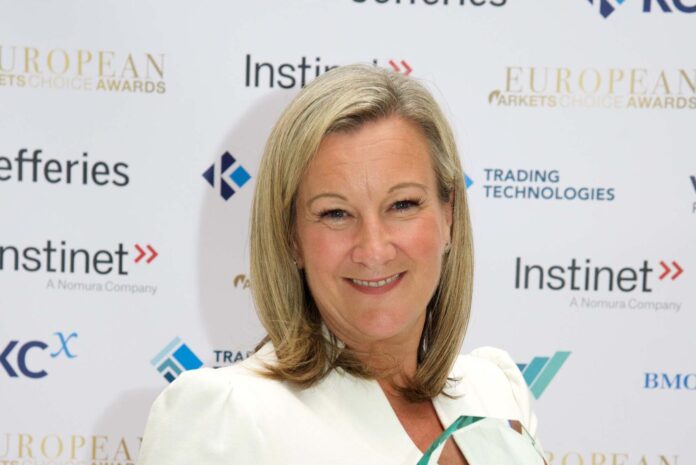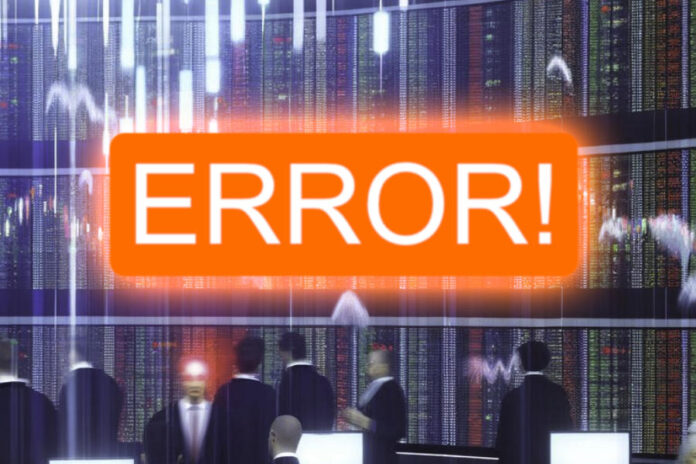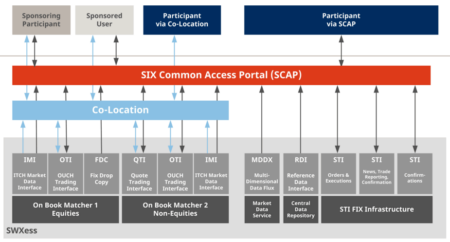Chris Minck, BlackRock’s EMEA head of systematic execution, and Meredith Herold, CEO of BlackRock execution services and global head of systematic execution discuss effective systematic trading, the benefits to end investors, and the skills needed to create and run systematic workflows with our sister publication, The DESK.
Operations
1. What are the precursors to effective systematic trading in terms of information and market structure?
Chris: When assessing an asset class for integration with the Systematic Execution Trading desk, we focus on three critical factors: data quality, electronification, and market liquidity. For effective automation of workflows, robust data on market executions is essential to establish sensible parameters. This data is often a byproduct of electronification, which provides a comprehensive dataset of our historical executions, enabling precise calibration of our parameters.
Electronification also facilitates the scaling of our processes, as it allows us to collaborate with trading venues to automate operations where feasible. Lastly, we consider market liquidity to ensure that the volume of trades we execute does not negatively impact the market, particularly when dealing with one-touch or no-touch workflows. This underscores the importance of thorough post-trade Transaction Cost Analysis (TCA) to evaluate our market footprint.

Meredith: Information and market structure, while distinct, are both crucial elements that significantly influence the effectiveness of a Systematic Trading strategy. These factors are not mutually exclusive and interact in ways that impact the scale and automation of such strategies. Information refers to the access to real-time data and the ability to process this data efficiently. This includes market prices, trading volumes, news, and other relevant data points. The timeliness and accuracy of information are paramount and allow for immediate adjustment in trading models, which helps in making more informed decisions about venue, broker, and execution. For example, knowing which venues offer the best liquidity for certain assets can influence execution strategies as a way to minimise market impact and transaction costs.
Market Structure encompasses the organisation and characteristics of the trading environment. A well-understood market structure allows for better strategising around where and how to execute the trades.
2. Where do these exist in global fixed income markets?

Chris: The US Treasury market is a natural starting point for us given the depth of market. Since then, we’ve broadened our reach across Developed Markets. Globally, our coverage now spans G3 Rates, Investment Grade (IG), and select High Yield (HY) sectors. Additionally, we’ve diversified into Fixed Income ETFs and Futures.
Meredith: As the market structure evolves, and regulatory regimes pave the way towards more price and transaction transparency in the fixed income markets, more data becomes available in different areas of the market including those that were less conducive to Systematic Execution strategies. For example, in US IG Credit, traditionally less transparent, corporate bond markets have seen increased reporting and transparency requirements. This shift allows Systematic Strategies to leverage detailed transaction data to identify trading opportunities and optimise execution.
3. What are the objective goals of using systematic trading from the end investors’ perspective?
Chris: Systematic Execution streamlines the process of getting trades to market swiftly while simultaneously eliminating any potential trader biases. The majority of the volume processed through the Systematic Strategies competes against bank algorithms, rendering a trader’s added value relatively minimal. This shift frees up our High Touch traders to concentrate on larger, more complex risk transfers, which ultimately benefits our end investors.
Meredith: The impact of systematic trading in fixed income markets varies depending on the perspective of the stakeholder involved. For BlackRock, both the portfolio manager’s and the client’s perspectives are crucial in understanding the benefits and objectives of implementing Systematic Trading Strategies. From our portfolio manager’s perspective, Systematic Trading reduces the time to market, balances our market footprint, optimises execution costs, and increases access to liquidity.
Systematic Execution Strategies enable our traders to provide equal and fair market access regardless of their size or investment mandate. By leveraging advanced trading technologies, BlackRock ensures that all our clients benefit from the same high standards of execution and market opportunities.
4. How can absences of historical data be overcome with heuristics or AI/ML generated data, in trading?
Chris: The US has the advantage of long-standing access to TRACE, providing a wealth of data. The forthcoming consolidated tape in EMEA is anticipated to significantly enhance our data pool, thereby improving our processes. In instances of data scarcity we develop solutions to bridge these gaps, including the use of AI. These tools, combined with our traders’ expertise, are integral to our decision-making process.
Management
1. Which skills do you need in your team to create and run systematic workflows?
Chris: Proficiency in coding and data science is crucial in our field. Equally important is a keen interest in the financial markets. While our team engages in extensive analysis, our core identity remains that of traders. This dual expertise is what enables us to excel in our roles.
Meredith: An insatiable desire and motivation to innovate, which challenges the status quo, is essential for driving progress and maintaining a competitive edge. By embracing change, leveraging technology, and fostering a culture of continuous improvement, BlackRock can transform stagnant workflows to enhance both portfolio management and client outcomes. This commitment to innovation ensures that Systematic Trading Strategies remain effective, efficient, and aligned with the evolving needs of the market and clients.
2. How does systematic trading work alongside non-systematic trading and what is the triage process for orders?
Chris: Our desks are in a state of continuous dialogue, particularly when managing substantial flows. We collaborate closely, discussing the best approach to execute large orders. This is particularly pertinent in the credit sphere; while an individual trade might be suitable for Systematic Execution, at times it can be more strategic to handle the entire flow through the High Touch desk, such as executing a Portfolio Trade.
Meredith: Collaboration between our trading and portfolio management teams over the past decade or so has led to the development of a sophisticated order raising framework. This framework ensures that each order is executed using the most appropriate execution style, whether through voice trading, RFQ, or auto-execution, thereby enhancing efficiency, accuracy, and overall execution quality.
Orders that require the traditional “voice” execution style will always be routed to a high-touch trader who has deep market knowledge and a specialist in the asset/instrument. Orders that are eligible for auto-execution are typically routed through the Systematic Execution desk, where our traders are generalists.
3. Are systematic investment and trading intrinsically linked or is the trading model applied based on market condition not investment strategy?
Chris: At BlackRock, our Global Trading platform is centralised and distinguished from our investment teams. Whilst distinguished and independent, we are seamlessly connected via our Aladdin technology platform with our investment teams,
4. How has resourcing to systematic trading changed over the last five years, and how have the efficiencies it delivers justified that?
Chris: In the past five years, the resources provided by our vendors have increased significantly. The platforms we utilise now feature Automated Execution capabilities, facilitating Rules-based trading. This advancement has enabled us to scale our trading volume significantly. We have also further streamlined our workflows, allowing the teams to implement no-touch trading. These developments, in tandem, have allowed us to enhance our processes and achieve consistent year-over-year growth in the proportion of Fixed Income trading volume handled by our desk.
Meredith: The Systematic Execution desk’s proactive engagement with vendors and the sell-side has been instrumental in driving innovation and optimising workflows. This collaborative approach ensures that we remain at the forefront of technological advancements, supporting our growth and operational efficiency while maintaining strong industry relationships.
Talent
1. What were your career paths into your current roles?
Chris: I’ve been a part of BlackRock for 14 years, beginning my career in Trade Operations in the US, where I was confirming FI trades, including Meredith’s trades. My career path then led me to London to join the FI trading desk. I’ve embraced multiple roles, from being a part of the Low Touch Desk, a precursor to the Systematic Desk, to my ongoing role as a High Touch Rates Trader as well as Head of EMEA Systematic Execution. This extensive background has given me a comprehensive understanding of the Fixed Income landscape, trading across Rates, Credit, and even dabbling in Emerging Markets. These varied experiences have equipped me with the insight to identify High Touch workflows that are primed for transition to the Systematic Desk.
Meredith: My journey began at a financial solutions company, where I honed my skills in finance, logistics, and project management by structuring technology leasing programs for corporate clients. Seeking to gain more experience with investment strategies and client relations, I then transitioned to a trust company, where I focused on preparing institutional fund pitchbooks and client performance materials, specifically in fixed income. In 2004, I joined Merrill Lynch Investment Management, which was subsequently acquired by BlackRock. I started in a role assisting high net worth portfolio managers and servicing fixed income clients. In 2006, a coveted fixed income trading seat was available, and knowing that was where I wanted to go, I jumped on the opportunity and have not looked back. Over the past 18 years, my trading seat has taken many twists and turns from a junior trader manually executing and processing orders, to now the Global Head of Systematic Execution based in Atlanta, Georgia, which focuses on scaling complex workflows through automation, data driven insights, and trading acumen.
2. What are the challenges in recruiting into your team?
Meredith: For Systematic Execution, it is often difficult to properly assess the technical skillset for the specific role prior to onboarding.
Chris: The ideal candidate is someone who embodies a well-rounded skill set, combining technical prowess with the ability to effectively interact and communicate within a trading environment.
3. What advice would you give anyone who wanted to move into a systematic trading role, either from a data science or trading background?
Chris: Learning the Python programming language have proven invaluable for swiftly analysing data and implementing performance tracking reports. When hiring, one of my primary focuses is on candidates’ eagerness for continuous learning. With increasing transparency in the Fixed Income market, we’re presented with a unique opportunity to broaden our horizons. We’re on the lookout for individuals who view this as an exciting challenge to embrace.
Meredith: Systematic Trading indeed requires a unique blend of skills and perspectives. To a data scientist entering the realm of financial markets and execution, I would emphasize the importance of developing a genuine interest in financial markets. Unlike traditional trading, where intuition and experience play a significant role, Systematic Trading relies heavily on data analysis and processes. Therefore, having a passion for understanding financial markets and execution dynamics is crucial for success in this field.
On the other hand, for someone with a traditional trading background transitioning into Systematic Trading, I would emphasise the need to draw upon their experience to quantify trading results to ensure strong performance. While data and algorithms drive Systematic Trading, having a deep understanding of market behaviour and trading strategies can provide valuable insights and help refine quantitative models. By leveraging their expertise, traditional traders can contribute to enhancing the effectiveness and reliability of systematic trading strategies.
4. What are your expectations for the shape of a systematic fixed income trading team in the future, relative to the historic FI trading teams?
Chris: Systematic Traders are poised to handle increased volumes with greater efficiency, requiring less human intervention. As the thresholds for assignments to the Systematic Desk rise, our traders must possess not only a deep understanding of the markets but also the technical acumen to ensure the attainment of the best execution possible.
Meredith: I envision a future scenario where there is no longer a rigid separation between high touch and Systematic Trading; instead, systematic strategies are embedded within the trading infrastructure, enabling a more agile and adaptive approach to execution. This integration allows trading operations to leverage data in real-time to optimise execution outcomes, regardless of the trading style or strategy employed.
THIS ARTICLE WAS FIRST PUBLISHED ON THE DESK
©Markets Media Europe 2024
















